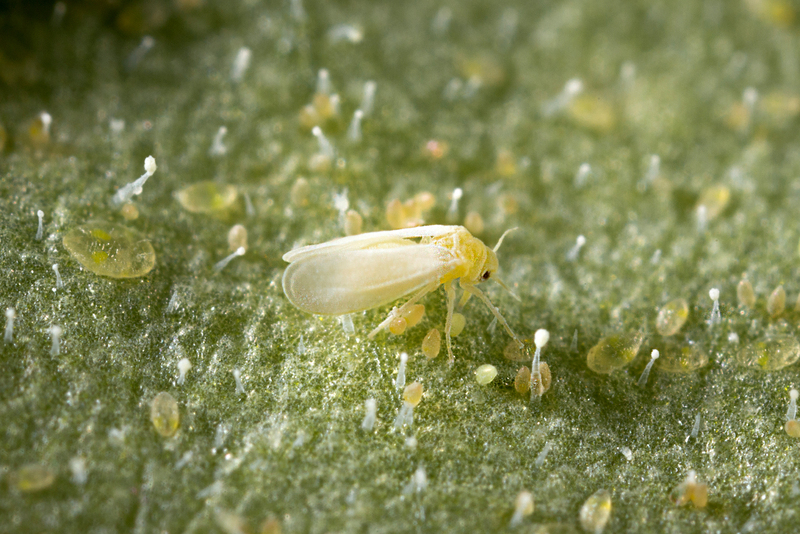The greenhouse whitefly and tobacco whitefly can survive in various locations and have a wide range of host plants: the insect targets vegetable and ornamental crops under glass in particular.
The greenhouse whitefly and tobacco whitefly can thrive on a wide range of different host plants from all manner of families. Whitefly can appear on various vegetable crops, including tomato, cucumber, aubergine, courgette, bean, and pepper as well as potato. Many ornamental crops, including rose, gerbera, hibiscus, and poinsettia, are not safe from whitefly.
The problem inside the greenhouse is more acute than outside, as temperatures inside tend to be higher. This stimulates the development of the infestation. In addition, rain and wind are factors that affect outdoor areas, lowering the risk of infestation.

Preferences
Although whiteflies are comfortable in various locations, development is faster in some crops than in others. Whiteflies multiply much faster on cucumber plants than on tomato plants, for example, and can survive much better on gerbera than on roses.
It certainly has its preferences. This is partly due to the fact that some plants offer a better food supply for whitefly. In addition, some host plants have properties that are less favored by insects: tomato plants, for example, have small hairs and secrete a sticky and toxic substance that smaller insects find difficult to cope with. In other words, tomato plants have better defense mechanisms to guard against ‘intruders’ than other vegetable crops. Unfortunately, this does not necessarily mean that the whitefly will not see the tomato as a ‘tasty snack’.
